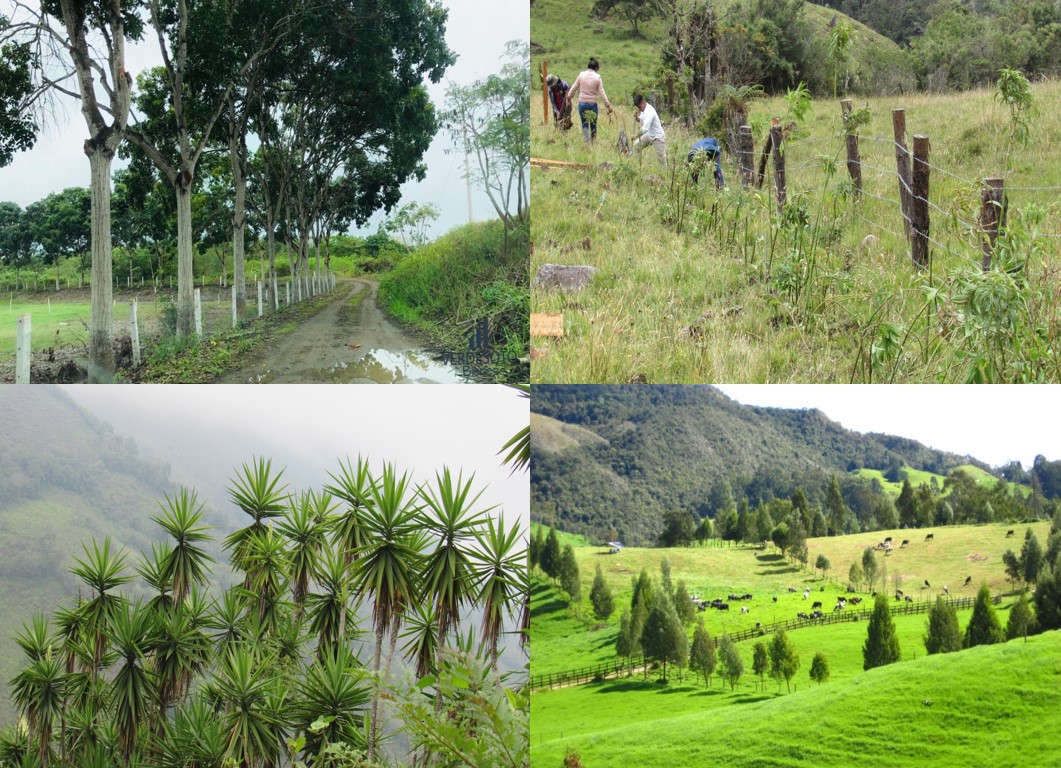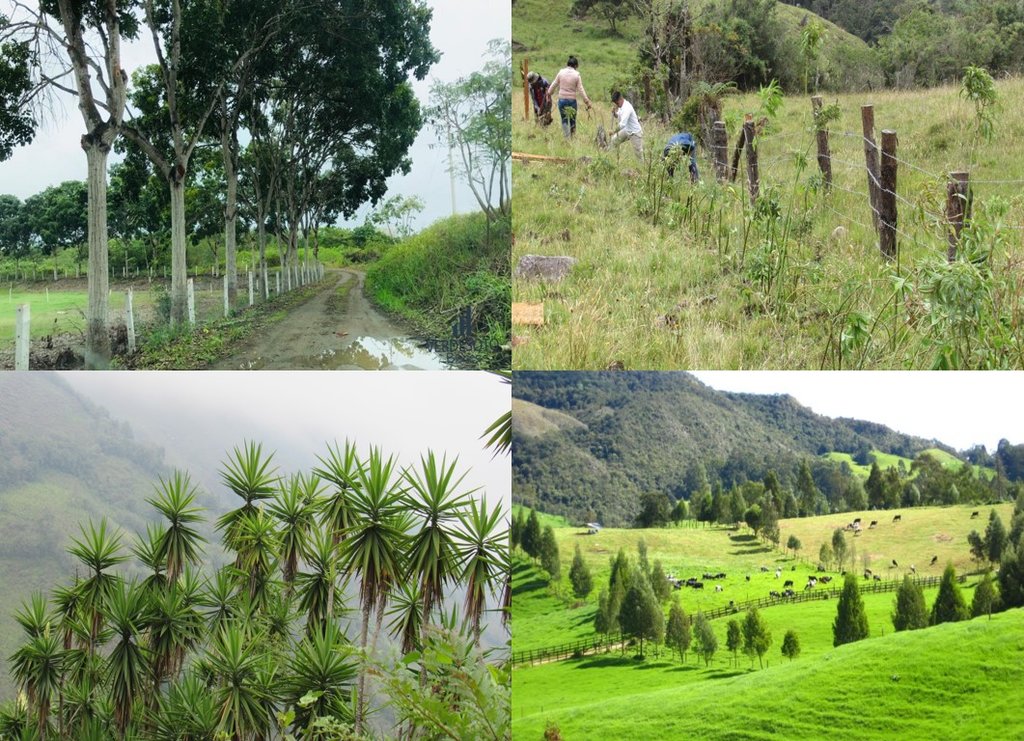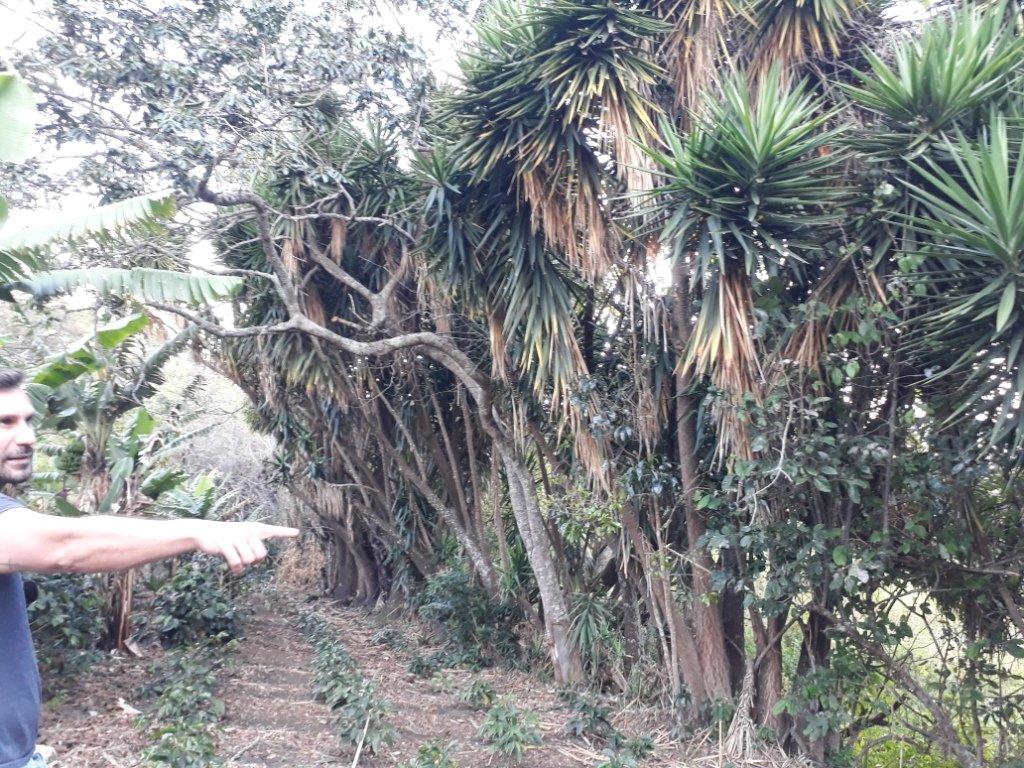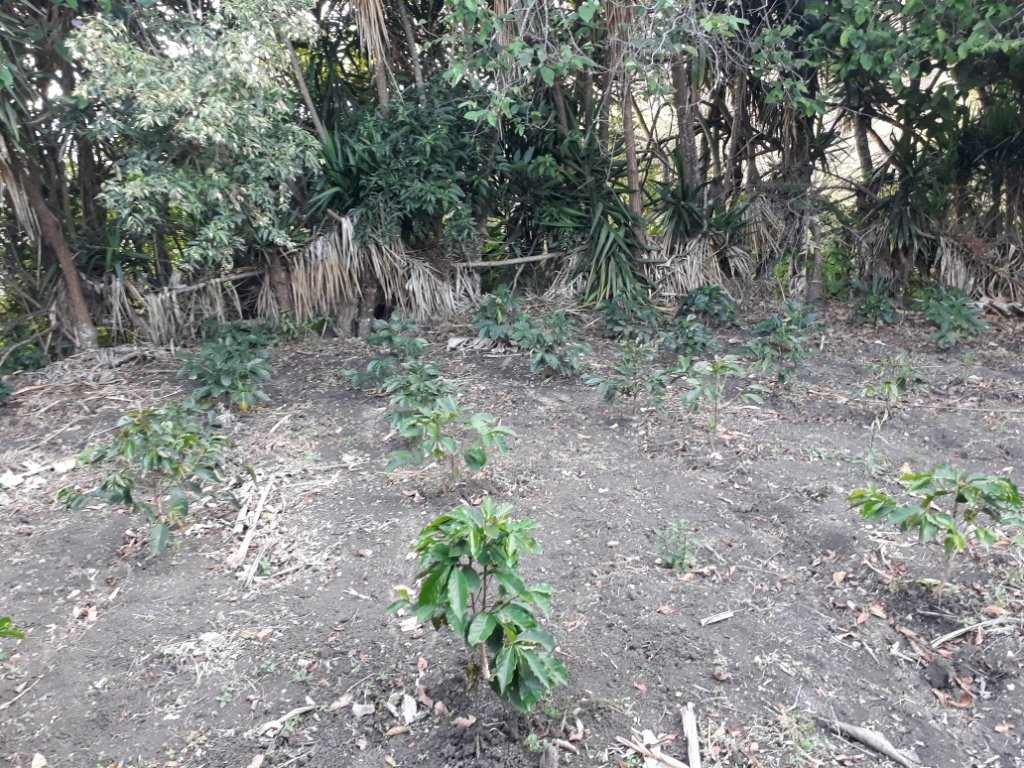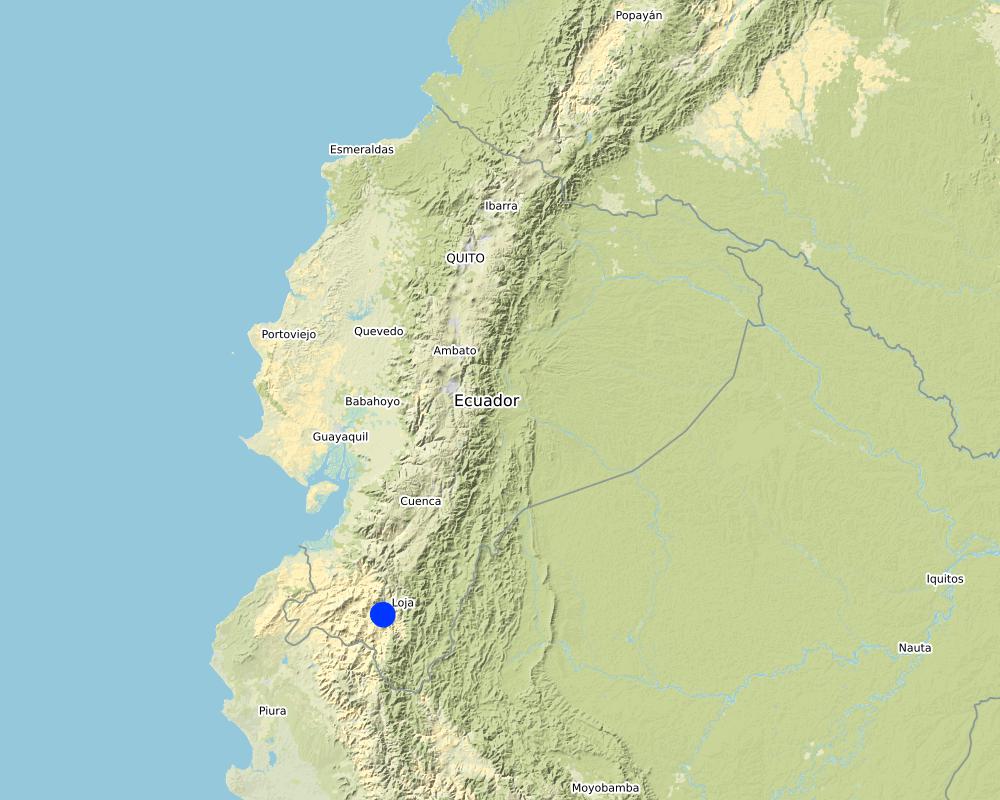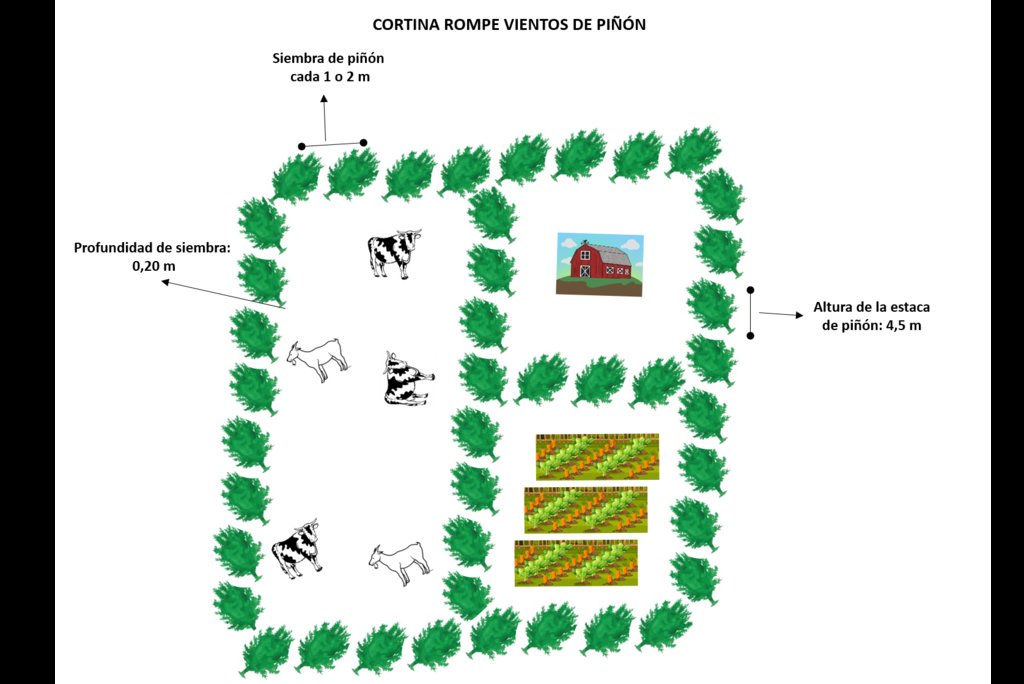Cortina rompevientos [Ecuador]
- Creation:
- Update:
- Compiler: Pablo Caza
- Editor: Carlos Samaniego
- Reviewers: Giacomo Morelli, Johanna Jacobi
Cortina rompevientos
technologies_3272 - Ecuador
View sections
Expand all Collapse all1. General information
1.2 Contact details of resource persons and institutions involved in the assessment and documentation of the Technology
Key resource person(s)
SLM specialist:
Ecuador
Name of project which facilitated the documentation/ evaluation of the Technology (if relevant)
Decision Support for Mainstreaming and Scaling out Sustainable Land Management (GEF-FAO / DS-SLM)Name of the institution(s) which facilitated the documentation/ evaluation of the Technology (if relevant)
Ministerio de Ambiente y Agua Ecuador (MAAE) - EcuadorName of the institution(s) which facilitated the documentation/ evaluation of the Technology (if relevant)
Ministerio de Agricultura y Ganadería Ecuador (MAG) - EcuadorName of the institution(s) which facilitated the documentation/ evaluation of the Technology (if relevant)
Organización de la Naciones Unidas para la Alimentación y la Agricultura Ecuador (FAO Ecuador) - Ecuador1.3 Conditions regarding the use of data documented through WOCAT
When were the data compiled (in the field)?
09/10/2018
The compiler and key resource person(s) accept the conditions regarding the use of data documented through WOCAT:
Ja
1.4 Declaration on sustainability of the described Technology
Is the Technology described here problematic with regard to land degradation, so that it cannot be declared a sustainable land management technology?
Nee
2. Description of the SLM Technology
2.1 Short description of the Technology
Definition of the Technology:
Barreras vivas con árboles y/o arbustos de rápido y mediano crecimiento en los linderos de los terrenos, de esta manera se logra reducir la velocidad del viento, el movimiento del suelo y la erosión
2.2 Detailed description of the Technology
Description:
Las cortinas rompevientos consisten de árboles y/o arbustos de rápido y mediano crecimiento en los linderos de los terrenos, con una separación de un metro entre planta y planta. Las especies más utilizadas son la flor de novia, guato, vainillo, chirimoya y faique. Las cortinas rompevientos o forestales están formadas por una o más hileras de árboles que forman una barrera perpendicular a la dirección predominante del viento. De esta manera se logra reducir la velocidad del viento, el movimiento del suelo y la erosión. Permiten también conservar la humedad del suelo así como reducir la acción mecánica del viento sobre cultivos, ganado y construcciones en finca, y son excelentes reguladoras de las condiciones del microclima. A través de una cortina rompeviento se puede disminuir la dispersión del polvo de los caminos interiores o de acceso a los campos y aislar visualmente algunos sectores del predio (casas, corrales, galpones, etc). Es posible también generar áreas para el desarrollo de la vida silvestre, producir madera y leña. En algunos lugares, especialmente en zonas áridas, las cortinas forestales embellecen el paisaje, aportando además un valor estético. La implantación de una cortina forestal facilita la protección de los animales bajo los árboles buscando su abrigo y sombra, dependiendo de las condiciones meteorológicas imperantes en los distintos momentos del día y del año. Bajo la sombra de las cortinas, los animales pueden mantener su estabilización térmica corporal y, por ende, mantener o incrementar su peso vivo. Las cortinas forestales regulan también la humedad ambiental. La evaporación está directamente vinculada con la velocidad del viento, por lo tanto, al disminuir la misma se genera un ahorro de agua importante en la zona protegida. Las cortinas forestales pueden ser utilizadas no sólo con fines de protección sino también productivos. Con un adecuado manejo, pueden producir madera, postes, leña y productos forestales no maderables. Algunas especies forestales utilizadas en las cortinas pueden ser fuente de alimento para el hombre y los animales o fuente de néctar, polen y resinas para las abejas.
2.3 Photos of the Technology
2.5 Country/ region/ locations where the Technology has been applied and which are covered by this assessment
Country:
Ecuador
Region/ State/ Province:
Parroquia Nambacola, Canton de Gonzanama, Provincia de Loja
Map
×2.6 Date of implementation
If precise year is not known, indicate approximate date:
- more than 50 years ago (traditional)
2.7 Introduction of the Technology
Specify how the Technology was introduced:
- through land users' innovation
- as part of a traditional system (> 50 years)
3. Classification of the SLM Technology
3.1 Main purpose(s) of the Technology
- improve production
- reduce, prevent, restore land degradation
- conserve ecosystem
- create beneficial economic impact
- create beneficial social impact
3.2 Current land use type(s) where the Technology is applied

Cropland
- Annual cropping
- Perennial (non-woody) cropping
- Tree and shrub cropping

Grazing land
Extensive grazing land:
- Semi-nomadism/ pastoralism
- Ranching
3.3 Further information about land use
Water supply for the land on which the Technology is applied:
- mixed rainfed-irrigated
Number of growing seasons per year:
- 2
3.4 SLM group to which the Technology belongs
- agroforestry
- windbreak/ shelterbelt
3.5 Spread of the Technology
Specify the spread of the Technology:
- applied at specific points/ concentrated on a small area
3.6 SLM measures comprising the Technology

vegetative measures
- V1: Tree and shrub cover
- V2: Grasses and perennial herbaceous plants

management measures
- M3: Layout according to natural and human environment
3.7 Main types of land degradation addressed by the Technology

soil erosion by wind
- Et: loss of topsoil
3.8 Prevention, reduction, or restoration of land degradation
Specify the goal of the Technology with regard to land degradation:
- prevent land degradation
- reduce land degradation
4. Technical specifications, implementation activities, inputs, and costs
4.1 Technical drawing of the Technology
4.2 Technical specifications/ explanations of technical drawing
Cortina rompeviento de piñon (Jatropha curcas)
Distancia de siembra entre plantas 2 m
Material de siembra, estacas de piñón de 1,5 m
Profundidad de siembra de la estaca 20 cm
Siembra con la presencia de las lluvias.
4.3 General information regarding the calculation of inputs and costs
Specify how costs and inputs were calculated:
- per Technology unit
Specify currency used for cost calculations:
- US Dollars
Indicate average wage cost of hired labour per day:
20
4.4 Establishment activities
| Activity | Type of measure | Timing | |
|---|---|---|---|
| 1. | Limpieza de terreno | Agronomic | Antes del inicio de las lluvias |
| 2. | Elaboración de hoyos | Vegetative | Antes del inicio de las lluvias |
| 3. | Siembra de plántulas | Vegetative | Antes del inicio de las lluvias |
| 4. | Cercado del predio | Structural | Antes del inicio de las lluvias |
Comments:
Se deben realizar las tareas antes del inicio de lluvias.
4.5 Costs and inputs needed for establishment
| Specify input | Unit | Quantity | Costs per Unit | Total costs per input | % of costs borne by land users | |
|---|---|---|---|---|---|---|
| Labour | Limpieza de terreno | jornal | 2.0 | 20.0 | 40.0 | 100.0 |
| Labour | Elaboración de hoyos | jornal | 1.0 | 20.0 | 20.0 | 100.0 |
| Labour | Siembra de plántulas | jornal | 1.0 | 20.0 | 20.0 | 100.0 |
| Labour | Cercado del predio | jornal | 2.0 | 20.0 | 40.0 | 100.0 |
| Equipment | None | None | 2.0 | 20.0 | 40.0 | 100.0 |
| Equipment | None | None | 2.0 | 10.0 | 20.0 | 100.0 |
| Equipment | None | None | 2.0 | 15.0 | 30.0 | 100.0 |
| Plant material | Estacas de Piñon | Estaca | 300.0 | 0.1 | 30.0 | |
| Plant material | Alambre de púas | rollo de 500 | 2.0 | 60.0 | 120.0 | |
| Plant material | None | None | 100.0 | 0.4 | 40.0 | |
| Plant material | None | None | 200.0 | 3.0 | 600.0 | 100.0 |
| Construction material | None | None | 1.0 | 10.0 | 10.0 | 100.0 |
| Construction material | None | None | 1.0 | 15.0 | 15.0 | 100.0 |
| Construction material | None | None | 1.0 | 10.0 | 10.0 | 100.0 |
| Total costs for establishment of the Technology | 1035.0 | |||||
If land user bore less than 100% of costs, indicate who covered the remaining costs:
Proyecto MST
Comments:
Solo el alambre de púa esta fuera del alcance del agricultor en esta práctica.
4.6 Maintenance/ recurrent activities
| Activity | Type of measure | Timing/ frequency | |
|---|---|---|---|
| 1. | Poda de ramas | Management | Anual |
| 2. | Siembra de espacios vacíos | Management | Anual |
4.7 Costs and inputs needed for maintenance/ recurrent activities (per year)
| Specify input | Unit | Quantity | Costs per Unit | Total costs per input | % of costs borne by land users | |
|---|---|---|---|---|---|---|
| Labour | Poda de ramas | Jornal | 2.0 | 20.0 | 40.0 | 100.0 |
| Labour | Siembra de espacios vacios | Jornal | 2.0 | 20.0 | 40.0 | 100.0 |
| Construction material | Estacas de piñón | Unidad | 100.0 | 0.2 | 20.0 | 100.0 |
| Total costs for maintenance of the Technology | 100.0 | |||||
Comments:
El agricultor cubrió el total de los costos.
4.8 Most important factors affecting the costs
Describe the most determinate factors affecting the costs:
La mano de obra es el factor que afecta directamente la implementación de esta medida.
5. Natural and human environment
5.1 Climate
Annual rainfall
- < 250 mm
- 251-500 mm
- 501-750 mm
- 751-1,000 mm
- 1,001-1,500 mm
- 1,501-2,000 mm
- 2,001-3,000 mm
- 3,001-4,000 mm
- > 4,000 mm
Specify average annual rainfall (if known), in mm:
1058.00
Agro-climatic zone
- semi-arid
- arid
5.2 Topography
Slopes on average:
- flat (0-2%)
- gentle (3-5%)
- moderate (6-10%)
- rolling (11-15%)
- hilly (16-30%)
- steep (31-60%)
- very steep (>60%)
Landforms:
- plateau/plains
- ridges
- mountain slopes
- hill slopes
- footslopes
- valley floors
Altitudinal zone:
- 0-100 m a.s.l.
- 101-500 m a.s.l.
- 501-1,000 m a.s.l.
- 1,001-1,500 m a.s.l.
- 1,501-2,000 m a.s.l.
- 2,001-2,500 m a.s.l.
- 2,501-3,000 m a.s.l.
- 3,001-4,000 m a.s.l.
- > 4,000 m a.s.l.
Indicate if the Technology is specifically applied in:
- not relevant
5.3 Soils
Soil depth on average:
- very shallow (0-20 cm)
- shallow (21-50 cm)
- moderately deep (51-80 cm)
- deep (81-120 cm)
- very deep (> 120 cm)
Soil texture (topsoil):
- coarse/ light (sandy)
- fine/ heavy (clay)
Soil texture (> 20 cm below surface):
- coarse/ light (sandy)
- fine/ heavy (clay)
Topsoil organic matter:
- medium (1-3%)
- low (<1%)
5.4 Water availability and quality
Ground water table:
on surface
Availability of surface water:
medium
Water quality (untreated):
for agricultural use only (irrigation)
Is water salinity a problem?
Nee
Is flooding of the area occurring?
Nee
5.5 Biodiversity
Species diversity:
- medium
Habitat diversity:
- medium
5.6 Characteristics of land users applying the Technology
Sedentary or nomadic:
- Sedentary
Market orientation of production system:
- subsistence (self-supply)
- mixed (subsistence/ commercial
Off-farm income:
- less than 10% of all income
- 10-50% of all income
Relative level of wealth:
- poor
- average
Individuals or groups:
- individual/ household
- groups/ community
Level of mechanization:
- manual work
Gender:
- women
- men
Age of land users:
- middle-aged
- elderly
5.7 Average area of land owned or leased by land users applying the Technology
- < 0.5 ha
- 0.5-1 ha
- 1-2 ha
- 2-5 ha
- 5-15 ha
- 15-50 ha
- 50-100 ha
- 100-500 ha
- 500-1,000 ha
- 1,000-10,000 ha
- > 10,000 ha
Is this considered small-, medium- or large-scale (referring to local context)?
- small-scale
- medium-scale
5.8 Land ownership, land use rights, and water use rights
Land ownership:
- individual, not titled
- individual, titled
Land use rights:
- leased
- individual
Water use rights:
- leased
- individual
5.9 Access to services and infrastructure
health:
- poor
- moderate
- good
education:
- poor
- moderate
- good
technical assistance:
- poor
- moderate
- good
employment (e.g. off-farm):
- poor
- moderate
- good
markets:
- poor
- moderate
- good
energy:
- poor
- moderate
- good
roads and transport:
- poor
- moderate
- good
drinking water and sanitation:
- poor
- moderate
- good
financial services:
- poor
- moderate
- good
6. Impacts and concluding statements
6.1 On-site impacts the Technology has shown
Socio-economic impacts
Production
crop production
animal production
Income and costs
diversity of income sources
Socio-cultural impacts
food security/ self-sufficiency
Ecological impacts
Soil
soil moisture
soil loss
6.2 Off-site impacts the Technology has shown
water availability
6.3 Exposure and sensitivity of the Technology to gradual climate change and climate-related extremes/ disasters (as perceived by land users)
Gradual climate change
Gradual climate change
| Season | Type of climatic change/ extreme | How does the Technology cope with it? | |
|---|---|---|---|
| annual rainfall | decrease | moderately |
Climate-related extremes (disasters)
Climatological disasters
| How does the Technology cope with it? | |
|---|---|
| heatwave | very well |
| cold wave | very well |
| drought | very well |
6.4 Cost-benefit analysis
How do the benefits compare with the establishment costs (from land users’ perspective)?
Short-term returns:
slightly positive
Long-term returns:
very positive
How do the benefits compare with the maintenance/ recurrent costs (from land users' perspective)?
Short-term returns:
neutral/ balanced
Long-term returns:
very positive
6.5 Adoption of the Technology
- more than 50%
Of all those who have adopted the Technology, how many have did so spontaneously, i.e. without receiving any material incentives/ payments?
- 90-100%
6.6 Adaptation
Has the Technology been modified recently to adapt to changing conditions?
Nee
6.7 Strengths/ advantages/ opportunities of the Technology
| Strengths/ advantages/ opportunities in the land user’s view |
|---|
| La diversificación garantiza la seguridad alimentaria de toda la familia |
| La diversificación garantiza la seguridad alimentaria de toda la familia |
6.8 Weaknesses/ disadvantages/ risks of the Technology and ways of overcoming them
| Weaknesses/ disadvantages/ risks in the land user’s view | How can they be overcome? |
|---|---|
| Al tercer año se evidencia recién los beneficios de las cortinas rompevientos (mediano plazo para los productores) | |
7. References and links
7.1 Methods/ sources of information
- field visits, field surveys
30
- interviews with land users
30
- interviews with SLM specialists/ experts
2
- compilation from reports and other existing documentation
1
7.2 References to available publications
Title, author, year, ISBN:
Manual de Manejo Cercas Vivas de Piñon
Available from where? Costs?
Libre distribución en cualquier medio, no tiene costo
7.3 Links to relevant information which is available online
Title/ description:
Manual de manejo Cercas Vivas de Piñón
URL:
https://www.researchgate.net/publication/321170553_Manual_de_manejo_de_cercas_vivas_de_pinon
Links and modules
Expand all Collapse allLinks
No links
Modules
No modules


